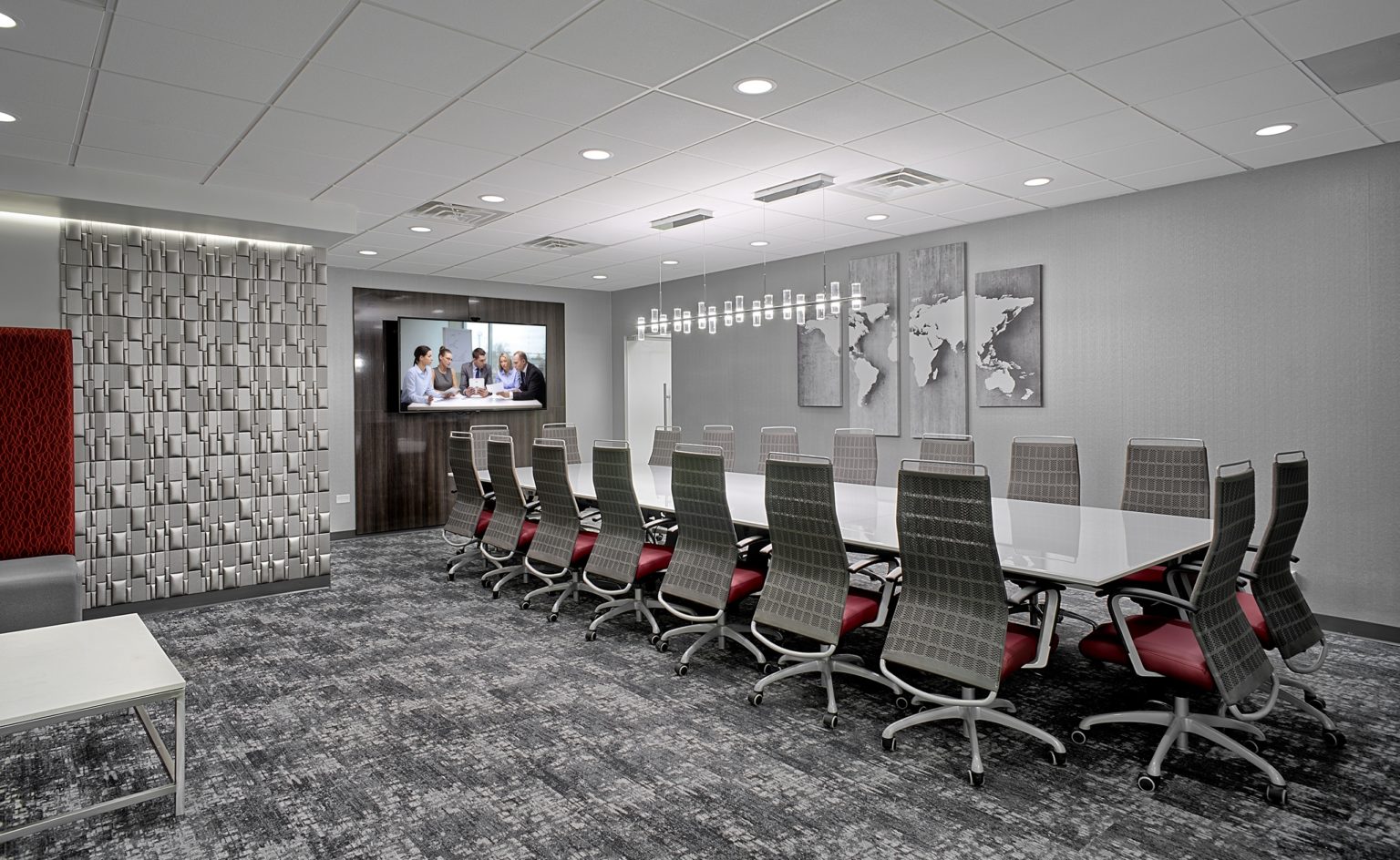
A conference room serves a variety of purposes for most businesses. In addition to providing space for employees to gather for meetings, most conference rooms are also used to court clients, entertain staff and guests, interview prospective personnel and train new hires. They serve as workstations, classrooms and sometimes even just a quiet place to relax. A large conference room is a valuable commodity; here are five important steps to designing the perfect one:
Evaluate Your Business’s Needs
As mentioned, a large conference room can (and should) serve multiple functions. Think about all the ways you might need to utilize the space so you are able to incorporate features that address the majority of those purposes. If your office has more than one conference room, it might not make sense to equip this one with high-tech audiovisual equipment; if your office only has one, it might! Just because a large conference room could include a lot of elements, it doesn’t mean it should!
Pick the Right Room
In a perfect world, a large conference room is removed from the hustle and bustle of your office’s daily activities. Look for a quiet, private space where your staff and guests can retreat to focus on the business at hand.
Think about Your Clients and Guests
A large conference room will necessarily create an impression on your clients and guests. Make sure it’s a good one. Remember that your conference room is an extension of your branding. It presents an image to the people who enter its doors. Strive to match your room’s furniture, decor, amenities and other components (right down to the paint) to the overall message you’re trying to convey and work to create as hospitable a place as possible so clients and other guests look forward to returning to it.
Choose Your Table(s) Carefully
A large conference room can accommodate a number of different types, as well as configurations, of tables. Determine if you need one table or several, and then consider the layout best suited to your room’s main function. For instance, for conference rooms used mainly for board meetings, a U-shaped table might work best since it facilitates easy conversation among all participants. On the other hand, a modular table option that can be rearranged in multiple ways would allow maximum flexibility for conference rooms being used consistently for numerous purposes.
Remember Lighting and Other Amenities
Lighting, of course, is one of the most important aspects of any room. For large conference rooms, you want to ensure there is enough lighting for people to see what needs to been seen, but not so much that there is a distracting and/or headache-inducing glare. A lot of work takes place in these areas, oftentimes with sophisticated equipment. The right lighting enables everyone to focus (on the screen, speaker, etc.). Likewise, the right amenities keep participants comfortable and involved. Remember to include trash cans. Add a serving area along one wall to easily distribute beverages, food and information packets. Sometimes a coffee machine and mini refrigerator are good additions to a large conference room as they allow for quick refreshment while staying engaged with meeting participants and objectives. Even something as mundane as the type of chairs you pick for your space can impact the productivity and satisfaction of your employees, clients and guests.
Ready for More Tips?
Designing a large conference room involves a variety of steps. These are just a few of them. To learn more about creating a conference room that optimizes your business objectives and maximizes your budget, please contact Key Interiors